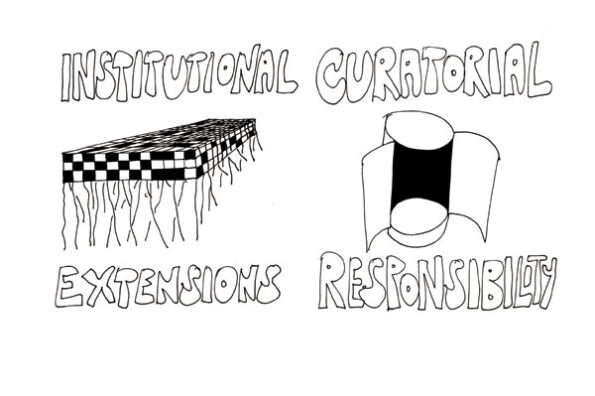Search
To search for an exact match, type the word or phrase you want in quotation marks.
A*DESK has been offering since 2002 contents about criticism and contemporary art. A*DESK has become consolidated thanks to all those who have believed in the project, all those who have followed us, debating, participating and collaborating. Many people have collaborated with A*DESK, and continue to do so. Their efforts, knowledge and belief in the project are what make it grow internationally. At A*DESK we have also generated work for over one hundred professionals in culture, from small collaborations with reviews and classes, to more prolonged and intense collaborations.
At A*DESK we believe in the need for free and universal access to culture and knowledge. We want to carry on being independent, remaining open to more ideas and opinions. If you believe in A*DESK, we need your backing to be able to continue. You can now participate in the project by supporting it. You can choose how much you want to contribute to the project.
You can decide how much you want to bring to the project.

The announcement made by the political sector that a large exhibition was to be organised in Berlin for its young and invisible artistic creativity, and that an art centre was also to be opened for this very reason, ignited something akin to a revolution amidst agents in the city. In the face of this desire of political instrumentalization, multiple meetings and debates are considering, at grassroots level, the role of artists and those involved in the arts, in the formulation of the city.
On the 29 January, a Sunday, the presentation of the manifesto, “Haben und Brauchen” (to have and to need) took place in Berlin. A text that deliberately takes the form of a pamphlet, a nine page leaflet printed in black and white, that is to all extents and purposes the first “result” of the discussions, debates and meetings that have been taking place in Berlin since December 2010 under the same name.
It is worth pointing out that what set off the activity of a conglomerate of individuals and collectives dedicated to the arts and culture in Berlin, in its most politically critical vein, was the announcement by the mayor Klaus Wowereit of an open submission for what was then called the “Leistungsschau junger Kunst aus Berlin” (Young Art Show of Berlin). With this call for submissions, the mayor of the city urged young artists resident in Berlin to take part in a ¨macro-exhibition¨, conveniently organised a few months before the municipal elections, the aim of which was to grant the growing artistic community in the German capital the space and attention it deserved.
As part of the project, or rather as a container for this contingent/convenient result, the construction of “The” contemporary art centre of Berlin was proposed, given that according to the administration, there wasn’t a space suitable for the exhibition of the extensive avant-garde artistic production, taking place at the moment in Berlin.
As was to be predicted, in the face of such arrogance, institutions, galleries and diverse autonomous spaces, some with more than 40 years experience, didn’t lose any time in demanding recognition for the work that they had done, as well as underlining the evident electoral interests behind this open call. On an icy December night, in the now non-existent independent space Basso, what has come to be called “Haben und Brauchen” began.
Representatives of spaces such as Ngbk, Kunstraum Kreuzberg Bethanien, Salon Populaire, as well as artists and curators, came together with the aim of denouncing the errors, reclaiming the achievements and responding to the, if nothing else, conflictive statement of Wowereit about the lack of any existent space for contemporary culture in Berlin, reeling before the implicit attempt of this manoeuvre to appropriate the creation that historically has had to organise its own resources in order to exist.
The mayor’s intended exhibition finally took place, under another name -“Based in Berlin”-, in 5 different places instead of just one, and under the umbrella of a glaring lack of concept. However the demands stated by “Haben und Brauchen”, united in an open letter to the mayor and signed by artists, institutional representatives and curators, were amply implemented in the programme (although this fact was facilitated by a drastic cut in the project’s budget), amongst which was the inclusion of different institutions as exhibition venues.
The question for many, among whom I count myself, was whether the problem had been solved with this gesture, if after the recognition of their presence and labour, if after denouncing the lack of content, the political interests and the collateral damage, of the massive process of gentrification that is implacably taking place in Berlin, whether with a palliative measure such as the inclusion of certain spaces more out of necessity than desire, the critical voices that had finally been aroused would be content.
The participating institutions rejected any responsibility or curatorial links with the exhibition, the excuse proffered in the face of the question of why give houseroom to a project of such characteristics. But one can’t shirk the responsibility of housing and endorsing an initiative by way of a voluntary ignorance about its content, particularly when the circumstances in which it is contextualised have been up to this point so questionable.
Despite everything, if one had to sum up, “Based in Berlin” perhaps brought better results than one might have imagined, especially for the unexpected. The accumulation of problems and conflicts in the art world, embodied by “Based in Berlin” managed to unite the fed up, the voluntarily excluded non-conformist with the way in which neoliberal logic gobbles up contemporary art.
Those who wanted to confront and endeavour to articulate the confusion and impotence caused by the situation, decided to stay united and to meet periodically to talk, debate, to beat the capital and to join forces. So “Haben und Brauchen” meetings have been happening in places like Salon Populaire, General Public and Ngbk, with the commitment to form a group and discuss the circumstances in which artists, curators and other workers in the arts have to negotiate daily: the lack of employment recognition for their work, for example in the form of contracts, salaries, regulations and participation in social security.
“Haben und Brauchen” is not the first initiative to stress this exploitation. Organisations such as W.A.G.E in New York, The YES! Association in Sweden or the Dutch CASCO have been clamouring for a long time now for, amongst other issues, the regularisation of artistic work in accord with unionised labour systems, as well as putting into practice artist contracts and fees for exhibitions. It is obvious that the market economy plays a determining role in the valuing of art, however, except for the minority that has constituted its name as a multi-million franchise, workers in the arts, particularly artists and independent curators, are examples of contemporary exploitation: with no timetables, working days or working weeks, they work with the sole motivation of carrying out a project with the hope that in an uncertain future their invisible labour will be recognized.
These are the characteristics that have made the artist the model of the entelechy repeated ad nauseam by the capitalist machine: the entrepreneur, who gives everything to bring a project to fruition, working non-stop, without a salary, timetable or pension.
Many are the voices that cry that if art lacks a labour movement, then it should be invented, there already being concrete projects for the creation of artists unions, some of which are historic, such as the Artists Union in the United States or the Bundesverband Bildender Künstlerinnen und Künstler in Germany. On the other hand, there are also many who reject the possibility, alleging that the introduction of any unionised organism would imply an apparatus of control that would be difficult to predict and limit.
Anyway, the proliferation of these initiatives is necessary, in order to try and counteract, in an organised manner, the indisputable transformation that is taking place with regard to the conception of work. Restructuring and re-union, the formulation of a common beyond assimilationism, providing the diversity and strength with which to affront the evidently complex panorama, by way of dialogue, critique, debate and the community.
Despite everything, it is worth making one last point about the enthusiasm and interest awoken by the vindications and complaints collated in “Haben und Brauchen”, and I just can’t help thinking, that like the day when the manifesto was presented in public, I’m writing this on a Sunday.

"A desk is a dangerous place from which to watch the world" (John Le Carré)